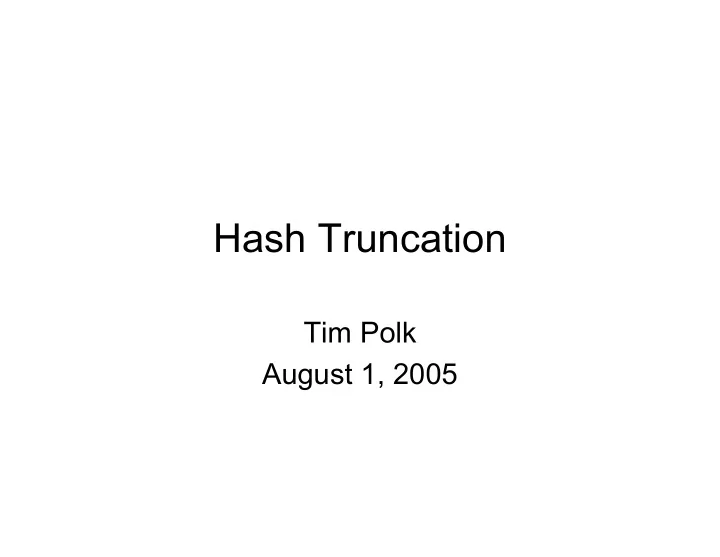

Hash Truncation Tim Polk August 1, 2005
Why Hash Truncation? • Assume we have confidence in a hash algorithm H that produces a digest of length N • If an application or protocol needs a message digest of length Np, and Np < N • Truncating the result of H is arguably preferable to developing/deploying a new algorithm that produces a message digest of length Np
Properties Required • H(Np,M) needs to be distinct from a simple truncation of H(M) – Ensures that recipient and receiver are using the same mode of operations – Simple truncation does not achieve this goal
General Idea • Define a new mode of operations for hash algorithms – Generate an IV from the combination of base Hash algorithm and truncated length • Hash the concatenation of (IV, M) • Truncate the result
Open Issues, I • Lots of different ways to generate the IV – Preferably, method will not require a new IANA registry! – Once editors have finalized their IV generation technique, ID will be submitted
Open Issues, II • No Security Proof – Heuristically, if H has security strength commensurate with its output length then the truncated result should have security strength commensurate with its output length
Status • Editors – John Kelsey (NIST) – Niels Ferguson (Microsoft) • -00 draft will be submitted prior to Vancouver • Strategy – Submit general solution in IETF – Pursue coordinated, specific solution in X9 to support ECDSA
Recommend
More recommend